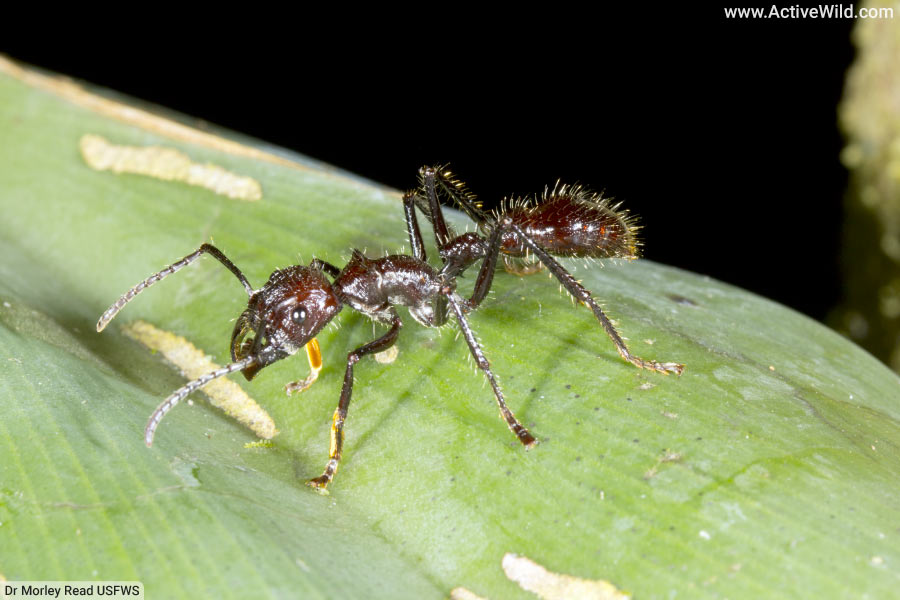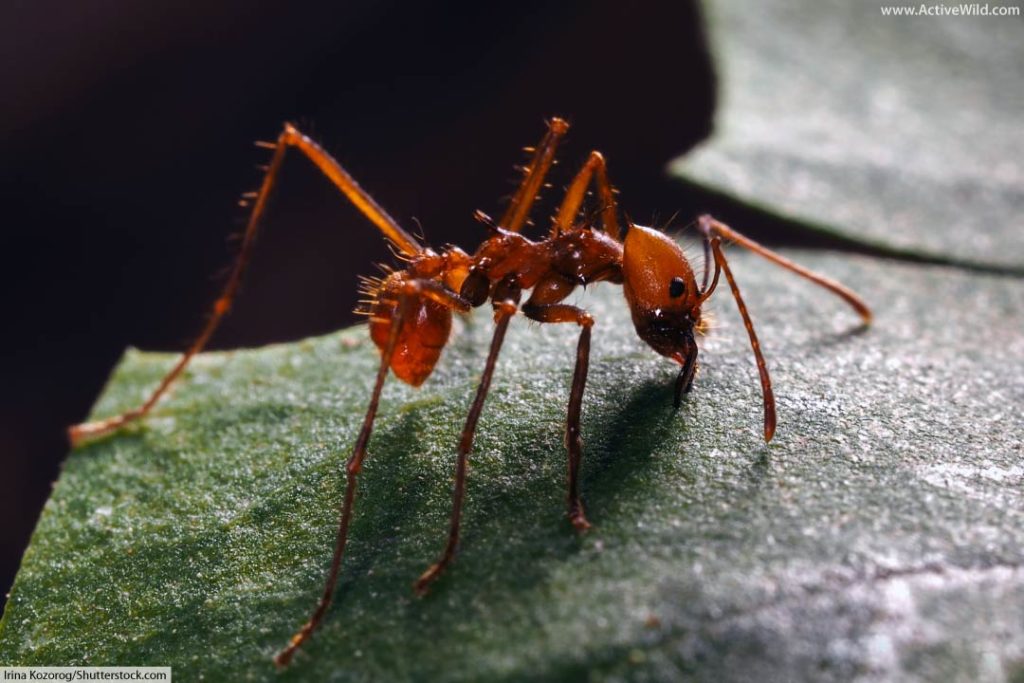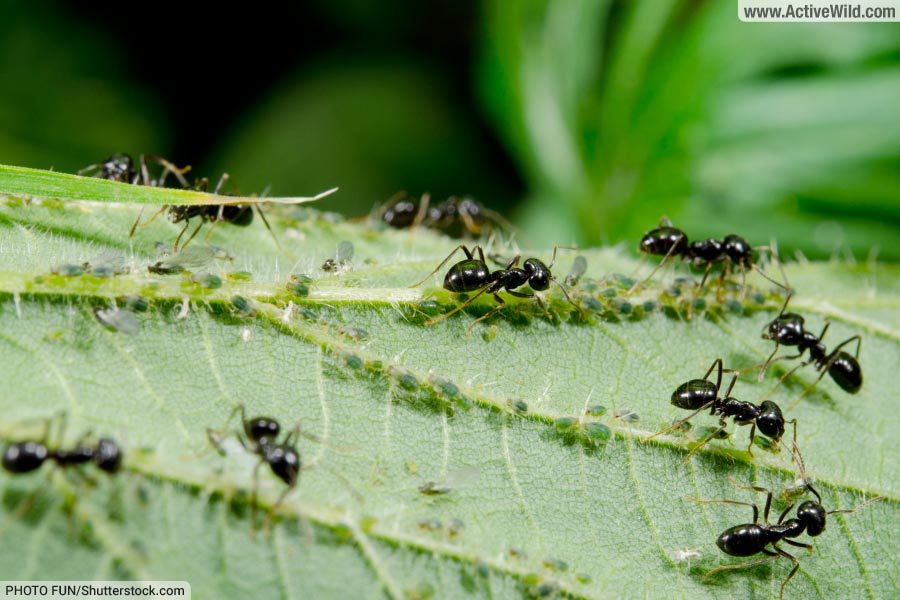Have you ever looked at the seething mass of life that is a typical ant nest and wondered how many ants live there?
Depending on the species, the answer could be in the millions.
Knowing that such a large number of ants are capable of living in just one colony, you might then be tempted to ask “how many ants are there in the world?”.
A team of scientists from Germany’s University of Würzburg has recently attempted to answer that very question…

How Many Ants Are In The World?
There are an estimated 20 quadrillion (20,000,000,000,000,000) ants alive today; around 2.5 million ants for every living person.
20 quadrillion ants equates to 12 megatons of carbon, which exceeds the biomass of all wild mammals and birds combined. The combined biomass of ants is the equivalent of 20% of all human biomass.
How Do You Count All The Ants On Earth?
The figure of 20 quadrillion ants, which is much higher than previously thought, was calculated in a study entitled “The abundance, biomass, and distribution of ants on Earth” by Patrick Schultheiss et al at Germany’s University of Würzburg.
The findings of the team’s study were released in a September 2022 article in the journal The Proceedings of the National Academy of Sciences (PNAS).

Understandably, the scientists didn’t count every ant individually. Instead, they reviewed 489 existing studies on both ground and tree-dwelling ants, covering all continents and habitats.
For decades, biologists have been studying a huge array of ant communities all over the world, collecting thousands of samples in order to identify species and learn more about the insects. As part of this research, the ants were often counted.
Using this data, an accurate estimate of the total number of ants in the world was able to be obtained.
The data also allowed scientists to ascertain the abundance of ants in particular habitats; something that had not previously been known. It was found that ants are unevenly distributed across the world, with tropical forests and savannas being home to two-thirds of the world’s ants.
How Many Species Of Ants Are There?
Estimates of the number of ant species range from 10,000 to 22,000. The Catalogue of Life currently lists 10,213 described ant species (source), and it is thought that there may be thousands of ant species still to be discovered.

Although ants account for at least one third of all insect biomass, ants are by no means the most species-rich of all insect groups (for example, there are over a quarter of a million beetle species!).
Ants
Ants make up the family Formicidae, which is part of a larger insect group, the order Hymenoptera, which is also home to sawflies, bees and wasps.
Ants inhabit a wide range of habitats, including grasslands, forests, deserts, swamps, and cities; everywhere, in fact, except the coldest and highest extremes of our planet.
The extensive range of ants is illustrated by the fact that there is a word for “ant” in almost every language.
How Do Ant Colonies Function?
Ants are one of the most successful groups of animals in the world, and much of their success can be attributed to their highly complex social structure.
Ants live in colonies with strict hierarchies. The colony is led by a single queen, whose responsibility it is to mate and lay eggs. Queens usually have wings and are larger than other ants in the colony. A queen ant can often live for over 20 years.
Worker ants, all of which are female, make up the most numerous group in an ant colony. Worker ants perform a range of jobs, including protecting the colony, taking care of larvae, and finding food. The ants you see out and about are most likely to be worker ants.
Male ants are known as drones. Drones mate with newly-emerged queen ants. A drone may only live for a week, and dies after mating. The mated queen ant then establishes a new colony.
Ants have developed complex communication systems to transfer information rapidly throughout the colony, which helps the colony to function more efficiently.
More Than Just A Number
Although calculating how many ants are in the world is a remarkable feat, the information revealed by the study on ant distribution and abundance is perhaps more important when it comes to furthering our understanding of the role ants play within their ecosystems.
This knowledge has long been lacking for insects, as they are often regarded as unimportant due to their small size. However, the impact they have on our planet is significant.
Ants interact with a range of other species. With an improved knowledge of where ants are found, and in what numbers, we may be able to measure the health of particular habitats.
Ants reproduce very quickly, moving from one generation to the next much faster than other animals. This means they respond quickly to environmental changes and can be used as indicators for other species.
What Roles Do Ants Play In The Ecosystem?
Ants play a major role in nutrient cycling, as they recycle dead animal and plant matter, returning nutrients to the soil, thereby enriching it. Tunnels excavated by ants also help to aerate the soil and improve water filtration, benefiting not just the soil but plants too.
As ants can move up to 13 tons of soil each year (much more than earthworms), they also play an important role in the distribution of plant seeds.
Several non-insect species have developed such close interactions with ants that they are now unable to survive without them. For example, in the jungles of Panama, many bird species will follow swarms of army ants as they stir up leaf litter and eat the insects that attempt to escape.
Genetic analysis has shown that this ant-following behavior first evolved six million years ago, gradually becoming more specialized. Today, the birds are unable to live without the ant swarms. Therefore, if anything were to happen to the ant population, the bird population would also suffer (source).
A recent study found ants to be more effective than pesticides for protecting crops. The insects were found to be better at killing pests, thus increasing crop yield, whilst being a cheaper and more sustainable method of pest control (source).
What Do These Findings Mean For The Future?
The results of this study open many doors for new areas of study, as scientists now have a clearer understanding of where ants are found around the world.
Although ants are good at adapting to change, some species fair better than others. In one study looking at the effect that climate change may have on ant colonies, it was found that city-dwelling ant species were better at tolerating higher temperatures than those in the countryside. Scientists predicted that warmer temperatures would speed up the ants’ life cycle, but what actually happened was the opposite.
Some ant species have a fast turnover of nests, with old nests providing shelter to other species that do not build their own. However, under higher temperatures, the ants held onto their nests for longer, leaving fewer vacant nests for other species and it’s not yet known how this may impact the wider ecosystem.
Related Pages
Nature News – The Latest Wildlife News From Around The World
Rainforest Insects: A List Of Insects That Live In Rainforests, With Pictures & Facts
Are Insects Animals? And If So… Why?
Is A Beetle An Insect – And Why? Beetle Characteristics
Is A Spider An Insect? What Are The Similarities & Differences Between Spiders & Insects?

